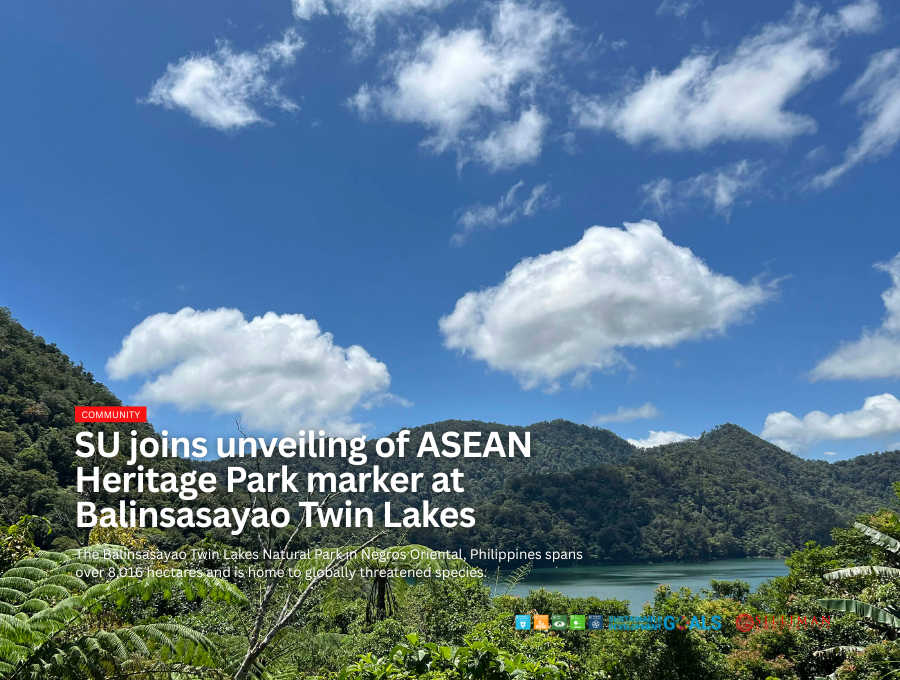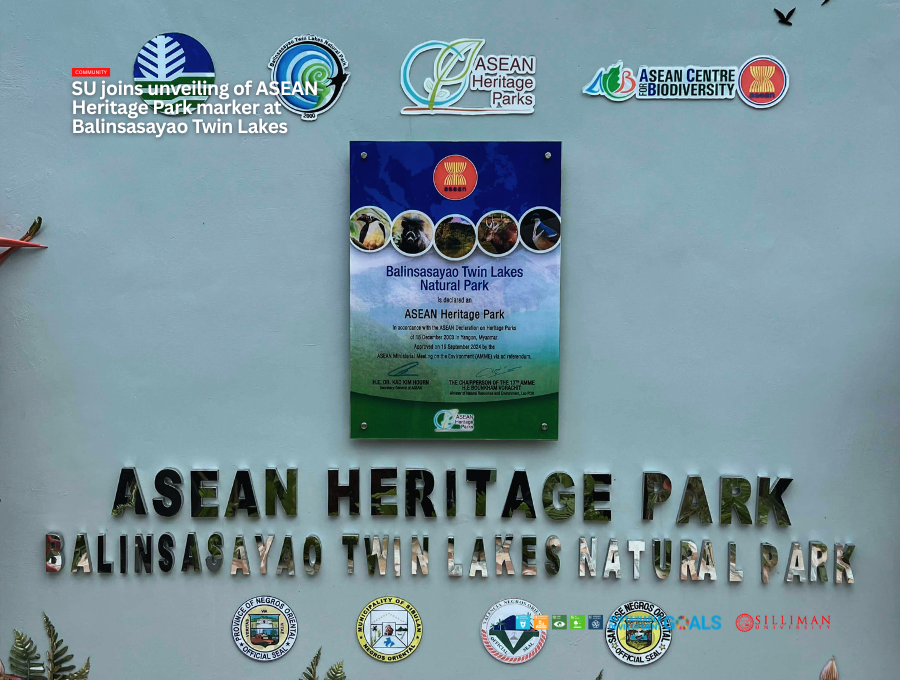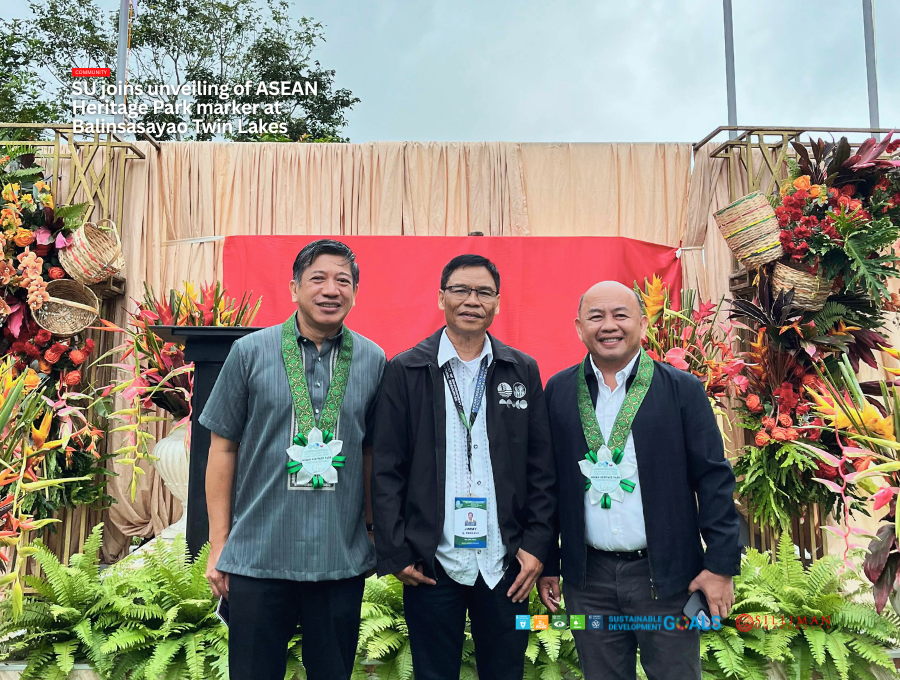
SU joins unveiling of ASEAN Heritage Park marker at Balinsasayao Twin Lakes

Silliman University (SU) joined key national and regional partners in the unveiling of the ASEAN Heritage Park (AHP) marker of the Balinsasayao Twin Lakes Natural Park (BTLNP) on November 21, 2025, in Sibulan, Negros Oriental, an event that formally recognized the site as the first ASEAN Heritage Park in the Visayas and the 59th in Southeast Asia.
The ceremony gathered around 250 participants from the Department of Environment and Natural Resources (DENR), the Provincial Government of Negros Oriental, the ASEAN Centre for Biodiversity (ACB), the Biodiversity Management Bureau, local government units, people’s organizations, the academe, and private institutions.
The ASEAN Heritage Parks programme, established in 1984, identifies and supports Southeast Asia’s most biologically important protected areas.
A milestone for regional biodiversity
Covering over 8,016 hectares of crater lakes, dipterocarp forests, waterfalls, and mountain ridges, the Balinsasayao Twin Lakes Natural Park is home to globally threatened species, including the Negros Bleeding-heart Pigeon, Visayan Warty Pig, Visayan Leopard Cat, Philippine Spotted Deer, and several endemic bat and shrew species. The ACB has also documented 325 fern species, 237 tree species, and 209 resident and migratory bird species within the park.

The Balinsasayao Twin Lakes Natural Park (BTLNP) is formally recognized as the first ASEAN Heritage Park in the Visayas and the 59th in Southeast Asia.
ACB Executive Director Dr. Jerome L. Montemayor emphasized that “good governance, combined with commitment and consistent effort, makes a difference in sustaining an ASEAN Heritage Park such as BTLNP,” calling on stakeholders to bring the park “closer to the people of Negros Oriental and the world.”
Silliman University’s longstanding commitment
Silliman University has played a pivotal role in the stewardship of the Balinsasayao Twin Lakes since its declaration as a national park on November 21, 2000, under Presidential Decree No. 414. Through the Silliman University Angelo King Center for Research and Environmental Management (SUAKCREM) and the Center for Tropical Conservation Studies (CenTrop), SU continues to serve as an active member of the Protected Area Management Board (PAMB).
Representing the University, Dr. Robert S. Guino-o II, Executive Director for Research, Publication, and Innovation, opened the event with a dedication prayer. In his message, he noted that the AHP status “formally places Negros Oriental as one of the hubs of the country’s key biodiversity areas,” and presents a challenge to stakeholders—especially the academe—“to continually strive to be an excellent model for protected area management in the Philippines and around the world.”
Government leaders reaffirm stewardship
Negros Oriental Governor Manuel L. Sagarbarria welcomed participants, stressing stewardship, responsibility, and accountability in managing the province’s protected areas.
Second District Congresswoman Maisa L. Sagarbarria highlighted the importance of multisector collaboration and shared that her office is preparing legislation to strengthen environmental protection, particularly in light of recent ecological threats in the region.

(From left to right) Dr. Robert S. Guino-o II of Silliman University, Jimmy A. Panebio of PENRO, and Erwin Magallanes of EDC attend the ceremony.
DENR officials from local to national levels also shared messages underscoring the national and international importance of the park’s new designation.
Forester Jimmy A. Panebio, OIC PENRO and BTLNP Protected Area Supervisor, expressed gratitude to the 24-member PAMB, which includes government agencies, LGUs, people’s organizations, NGOs, the academe—including SUAKCREM and CenTrop—and private sector partners. He also appealed for an increase in forest rangers, noting that only five currently patrol the park’s more than 8,000 hectares.
Strengthening conservation efforts
With its new AHP status, the Balinsasayao Twin Lakes Natural Park is expected to adopt the recommendations of the ASEAN Centre for Biodiversity to enhance governance, build capacity among stakeholders, and strengthen biodiversity conservation programs.
The Protected Area Management Board, of which Silliman University has been an active member for 25 years, will continue to meet regularly to implement programs, plans, and activities for 2025 and beyond, ensuring that the park remains a living legacy for future generations.


